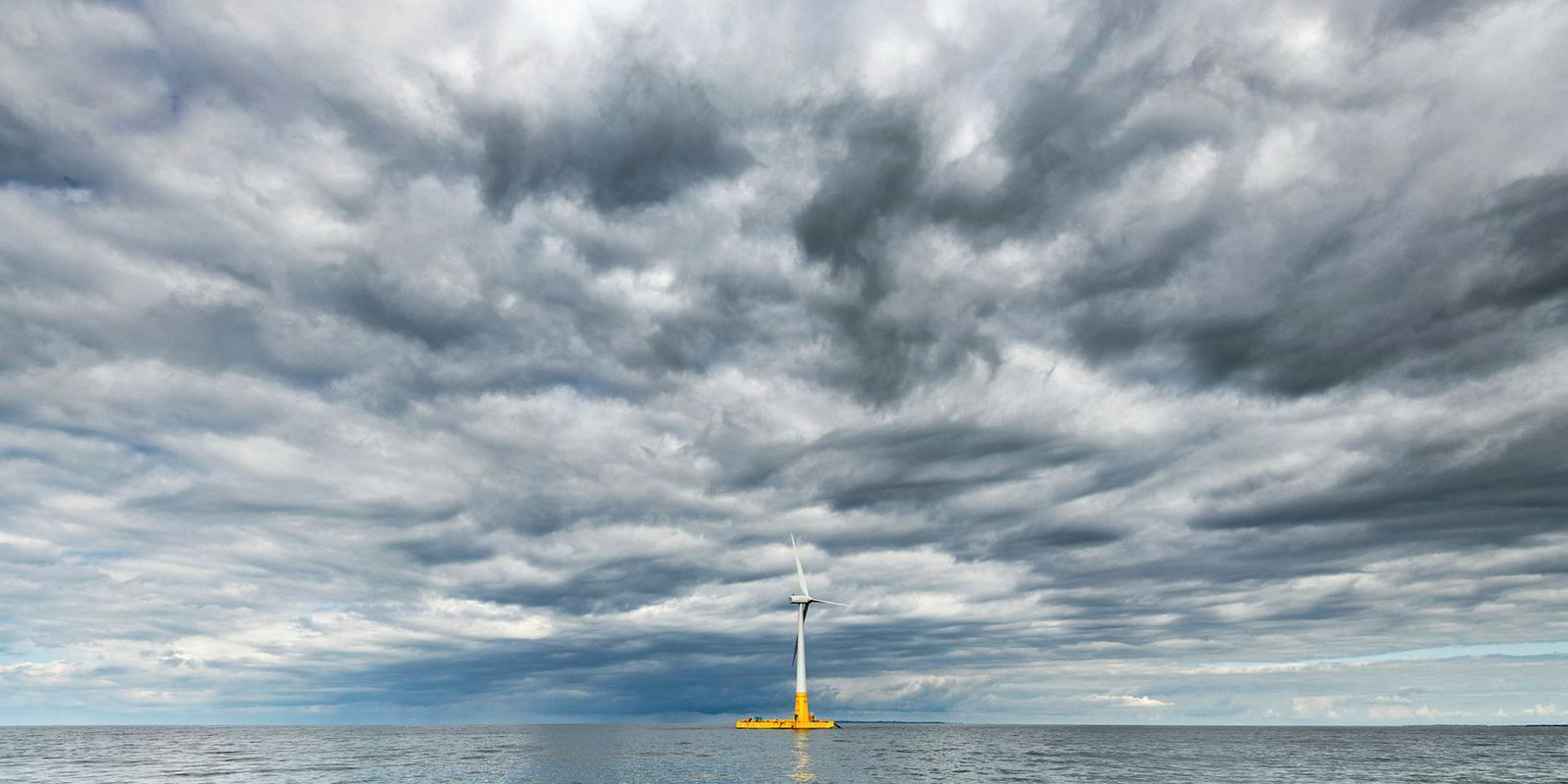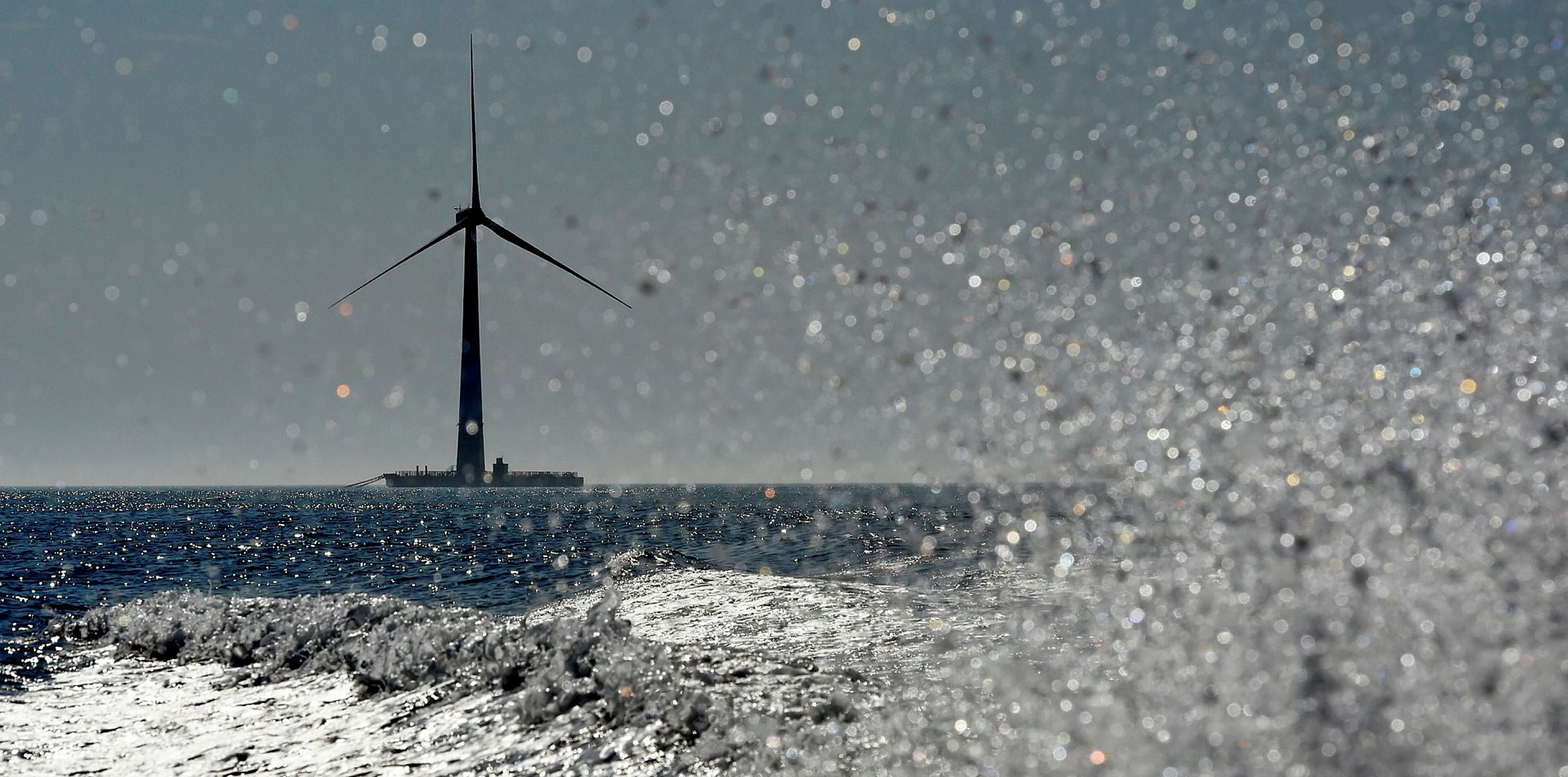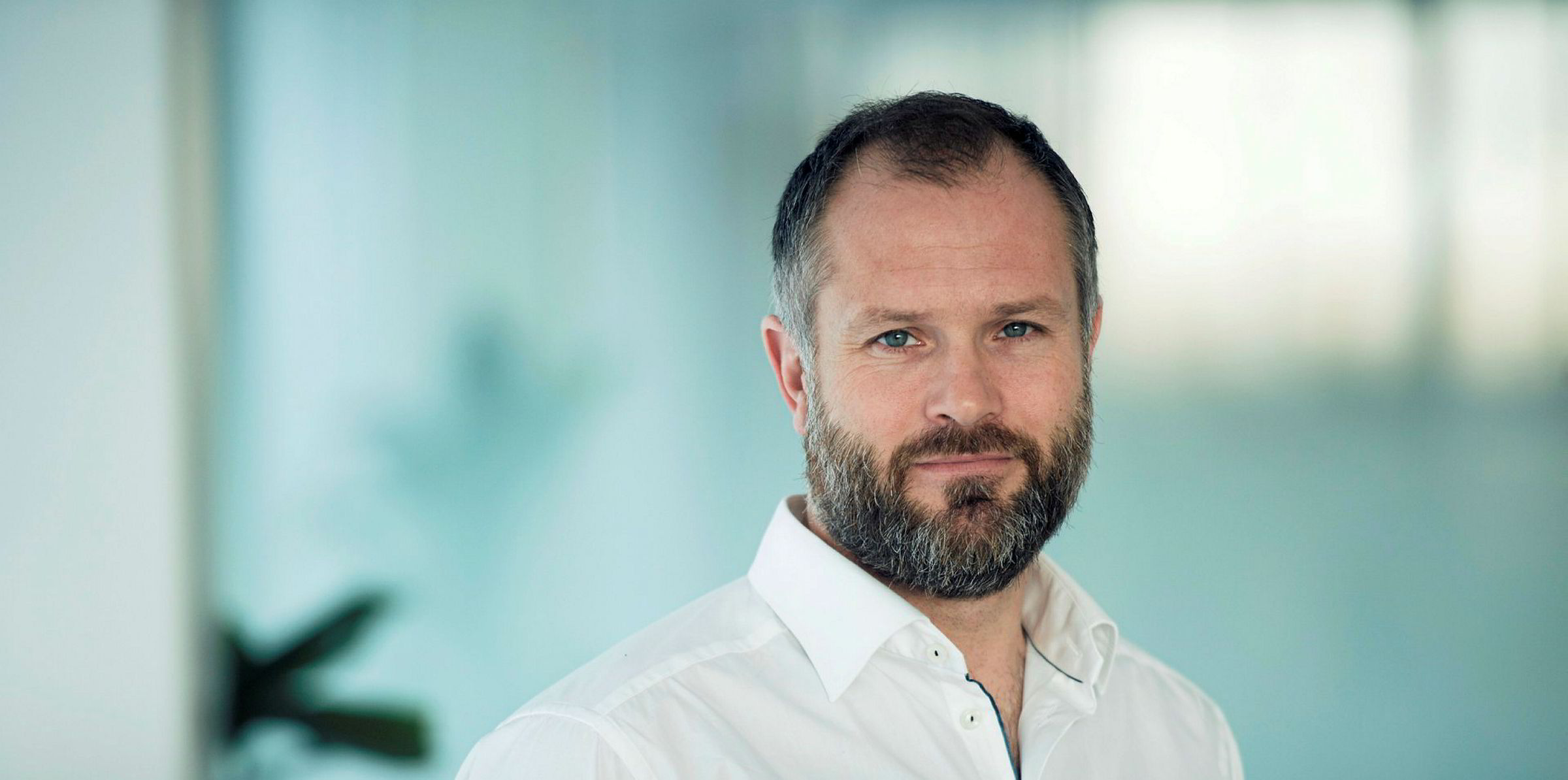Japanese construction and civil engineering giant Taisei – the conglomerate responsible for many of the island nation’s major infrastructure projects, including the 2020 Olympic Stadium in Tokyo – has inked a memorandum of understanding (MoU) with French floating wind pioneer Ideol to mass produce concrete versions of its ‘damping pool’ foundation for the country’s offshore build-out.
The agreement, signed this morning (10 October) in the Japanese capital by Taisei Corporation director Yoshiyuki Murata and Ideol chief sales officer Bruno Geschier, will be seen as a major fillip to the highly prospective but still embryonic market for floating wind in the region, given Taisei’s reputation and relationships within the country’s heavy industry and financial sectors.
“This is Japan’s largest construction company – building everything from Olympic stadiums to skyscrapers to bridges and dams – so [Taisei’s involvement] in floating wind will move the sector past being thought of as ‘earmarked’ for the shipyards to one that is of interest to the biggest civil engineers and construction companies globally,” Geschier told Recharge. “It gives the market a kind of ‘effervescence’.”
The “very detailed” MoU, he added, “was not signed on a whim”, having been in the works between the two companies for “well over a year”, while “exacting due diligence of [Ideol’s] technology” was carried out and the Japanese market for floating wind was studied “very closely”.
“Quite substantial resources are being allocated internally [at Taisei] to this,” said Geschier. “They believe in floating wind and they believe that through this commitment [to mass produce Ideol’s concrete foundation] they can accelerate the market with their ‘brand’, which is a household name in Japanese and international industrial circles.”
Jiro Taniyama, Taisei's managing executive officer, stated: “We are convinced that the combination of Ideol's engineering and Taisei construction techniques will allow us to do great things.
“Our commitment and motivation are strong so we can do great things. The agreement we are signing today, between a French company, country of the Paris Agreement, and a Japanese company, country of the Kyoto Protocol, will make it possible to achieve a zero CO2 emissions world.”
Mass production has long been spotlighted as a key strength of the economics of floating wind power, as the sector’s ability to ‘design one, build many’ turbine platforms where conventional bottom-fixed foundations have to each be tailored for varying water-depth and seabed soil conditions, is expected to help cut the levellised cost of energy (LCOE) of deeper water projects.
“[Taisei and Ideol] are both convinced that we can definitely achieve competitiveness [with bottom-fixed offshore wind] using our concrete [damping pool] design,” stated Geschier. “Even Japanese shipyards exploring the floating wind market [for steel platforms] are looking at their shipyards in the Philippines and Vietnam [for lower-cost options] and they are still dependent on [fluctuating] commodity prices [for the steel used].”
The tie-up with Taisei, he underlined, extends beyond “just manufacturing our platform – all the way to joint business development” of floating wind plants off Japan.
“We will be approaching existing and potential clients together – many of [which Taisei] has historical relationships with – utilities, developers and so on. So here is the real potential to accelerate our technology and floating wind at the same time.”
The deal should also help pave the way for Ideol’s current pipeline of projects off Japan, including what could be the first commercial-scale floating wind farm off Asia, a “multi-hundred-megawatt” development being progressed with Shizen Energy in the East China Sea off Kyushu, and another with global investment giant Macquarie set to start construction in 2023.
Developers’ focus on project timelines and so-called manufacturing ‘Takt time’ should “certainly be at least partly answered” by having a construction giant such as Taisei as a partner, said Geschier.
In May, Japan switched on its first floating wind turbine since the Fukushima Forward project commissioned in 2014, the Hibiki pilot off Kitakyushu. The prototype, made up of a turbine from German engineers Aerodyn and a steel Ideol platform, was installed as part of project being run by Nedo, the government’s industrial R&D department.
The MoU – which in Japan, unlike Europe or the US, is treated more as a legally-binding document – has an “ambitious road-map … with longer-term strategic goals for our future collaboration”, said Geschier, declining to elaborate due to “present contractual confidentiality”.
The Japanese floating wind power market stalled after the high-cost 14MW Fukushima Forward demonstrator project – which recently decommissioned one of the four units at the site. But industry views of the potential off the island nation have improved considerably of late, helped by bullish analysts, including Wood Mackenzie, which sees “explosive growth” in Asia’s offshore fleet helping fuel 723GW of global additions in the 2019-28 period.
Japan is planning for a first offshore wind tender in the first half of 2020 , although with a stipulation that the auction be limited to locations with water depths of 30 metres or less, floating wind will be effectively shut out of this round.
However, on the near-horizon is a floating wind fleet that the Japanese ministry of energy estimates could reach a mind-boggling 1,000GW in its waters – more than three times that of bottom-fixed due to the country’s narrow continental shelf.
Analysts range widely in their 2030 forecasts for floating wind, with estimates spread from as little as 6GW up to almost 19GW, all influenced by how quickly LCOE numbers can be brought down to below €50/MWh – perceived as the benchmark for competitiveness with conventional offshore wind.




